LASIK and PRK are both laser eye surgeries that can allow you to experience greater visual freedom, but there are some key differences between them. In LASIK, a thin flap is created on the cornea, whereas PRK involves removing the outer layer of the cornea.
This distinction affects the recovery time, as LASIK generally offers quicker visual improvement. However, PRK may be a better option for individuals with thin corneas or certain eye conditions.
Keep reading to learn more about LASIK and PRK, including the differences between the two!
What is PRK?
PRK, which stands for photorefractive keratectomy, is another type of laser eye surgery that can improve your vision. It’s similar to LASIK but has a few differences.
During PRK, the outer layer of the cornea is gently removed, and then a laser is used to reshape the underlying corneal tissue. This helps correct vision problems like nearsightedness, farsightedness, and astigmatism.
Unlike LASIK, PRK doesn’t involve creating a flap in the cornea. While the recovery time may be slightly longer than LASIK, PRK can still provide excellent results and improve your vision effectively.
What is LASIK?
LASIK is a popular refractive procedure that can help improve your vision and reduce reliance on glasses or contact lenses. During the procedure, a laser is used to reshape the cornea, the clear front part of your eye.
This helps correct common vision problems like nearsightedness, farsightedness, and astigmatism. The procedure is typically quick, usually taking only about fifteen minutes per eye.
LASIK has helped millions of people around the world achieve clearer vision and greater freedom from glasses or contacts.
How Do I Know if LASIK or PRK is Right For Me?
If you’re considering laser eye surgery but are unsure whether LASIK or PRK is the better option for you, the best option is to visit your eye doctor at Colorado Eye Consultants for an evaluation. During this appointment, they will evaluate your eyes and help determine the most suitable procedure based on your specific needs.
LASIK is typically recommended for those with thicker corneas and stable vision, while PRK may be recommended for those with thinner corneas or certain eye conditions. Your eye doctor will consider factors like your prescription, corneal thickness, and overall eye health to guide you in making the best decision.
Since the flap has to be created on the surface of your cornea during LASIK, your cornea must be a certain thickness for the procedure to be performed safely. If your cornea is too thin, PRK may be a better option since it doesn’t involve creating a flap.
They’ll also discuss the benefits, risks, and expected outcomes of each procedure, helping you choose the right one for your unique circumstances.
Choosing Between LASIK and PRK
In addition to consulting with your eye doctor, there are a few key factors to consider when deciding between LASIK and PRK.
It’s important to consider your lifestyle and personal preferences. LASIK typically offers a quicker recovery time, with most patients experiencing improved vision within a day or two.
On the other hand, PRK usually has a longer recovery period, with vision gradually improving over several weeks. If you have a job or lifestyle that involves activities that may put you at risk for eye trauma, such as contact sports, PRK may be a safer choice as it eliminates the risk of flap-related complications that can occur with LASIK.
It’s also important to understand that the final decision will depend on your individual eye health, prescription, and the recommendations of your eye care professional. They will thoroughly evaluate your eyes and provide you with a comprehensive assessment, explaining the pros and cons of each procedure based on your specific circumstances.
Are you considering your refractive surgery options? Schedule an appointment at Colorado Eye Consultants in Littleton, CO, today!

